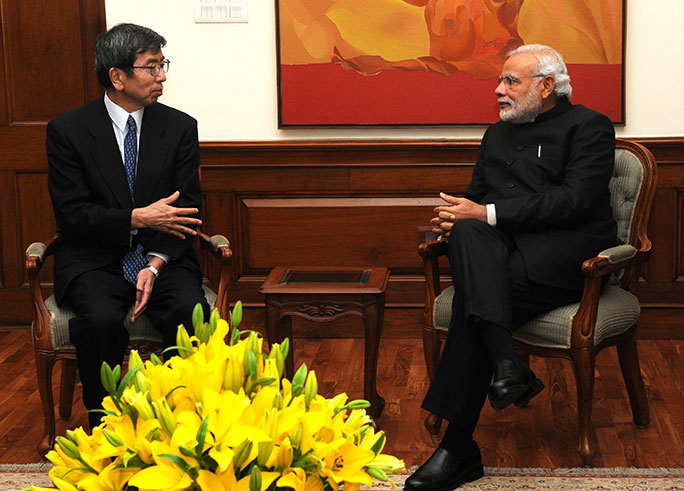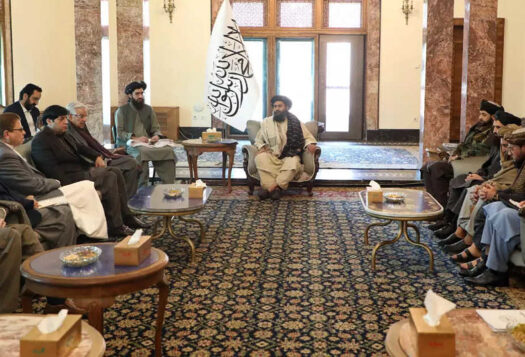
The world is facing severe challenges in tackling environmental issues. There is an increase in temperature, rise in sea level, and melting of ice, which is leading to the loss of our natural ecosystems. With energy demand increasing around the world, fossil fuels are being used at a very high rate – in 2012, fossil fuels accounted for 82 percent of global primary energy consumption. Fossil fuels such as, coal, oil, petrol and natural gas are the main cause of increasing emissions in the earth’s atmosphere, making up 69 percent of total greenhouse gas emissions globally. Although global warming and climate change are recognized globally, such problems need to be solved regionally.
Asia’s population nearly quadrupled during the 20th century, and is now the most populous continent in the world with around 4.3 billion people. Its growing population and rapid economic development are threatening its limited resources through expansion, destruction of natural habitats, and urbanization. These challenges will affect its poorest inhabitants most directly, and countries have now realized the importance of low-carbon growth and sustainable development if they want to continue to have economic gains.
In order to solve these issues, the Asian Development Bank (ADB), a regional development bank that facilitates economic development in Asia, is putting in efforts to tackle the problem of climate change. The ADB has promised to double its annual spending on the issue to $6 billion by 2020. Out of the $6 billion, $4 billion will be spent on renewable energy, energy efficiency, sustainable transport, and building smart cities, while the rest will be used for adaptation measures such as more climate-proof infrastructure, climate-smart agriculture, and better disaster preparedness. “Climate change is the preeminent challenge of our time. We need financing to mitigate and adapt to its impacts,” said Asian Development Bank president Takehiko Nakao.
The ADB has announced that it will increase its lending to help countries achieve the recently- adopted Sustainable Development Goals (SDGs), through “increased investments in human needs, infrastructure and cross border public goods.” ADB, United Nations Development Program (UNDP), and UN Economic and Social Commission for Asia and the Pacific (ESCAP) recently inked an agreement to work together on achieving the SDGs. However, finance alone is not enough to meet this challenge. A combination of finance with smart technology, stronger partnerships, and deeper knowledge is needed.
The Asia-Pacific region produces 45 percent of global greenhouse gas emissions. This will increase if a shift to cleaner energy, such as solar, wind, and geothermal, is not implemented. According to ADB estimates, South Asia needs $73 billion every year till 2100 to adapt to negative impacts of climate change. ADB has also warned that South Asia could lose 8.8 percent of its annual GDP by 2100, while Southeast Asia could lose 6.7 percent, if the impact of climate change is not tackled.
The ADB is doing its bit and in August announced $1.2 billion in assistance to Pakistan, with the major chunk of the amount to be spent on upgrading infrastructure in the power, transport, agriculture, and urban service sectors. The ADB is also providing a $45 million loan to Bangladesh to upgrade an irrigation and drainage project, which has enhanced agricultural productivity, and improved the lives of around 200,000 people.
Indonesia will also be supported by the ADB with the creation of a research center on clean energy. Japanese financial institutions have collaborated with the ADB to set up a $750 million fund to invest in Asia’s clean energy industry. India was one of ADB’s founding members in 1966, and both have a similar vision in terms of the type of growth they want to achieve.
Recently, ADB and India have signed a $200 million loan to support renewable energy projects. ADB’s loan will help the government enhance the renewable energy infrastructure by facilitating investments in projects that will balance the objectives of growth, climate change, and energy security.
China faces severe environmental challenges, especially pollution. Therefore, ADB is helping deploy public buses with lower greenhouse gas (GHG) emissions in major Chinese cities.
The Asia and Pacific need to understand the urgent need of environmental sustainability for economic growth and poverty alleviation. ADB can help the region in that endeavor. ADB’s mission is “an Asia and Pacific free from poverty,” and achieving growth that is “sustainable and inclusive.” ADB’s support for green energy solutions will create job opportunities, and provide financing opportunities through both public with the public and private partners to integrate cleaner technology in its projects.
Promoting and funding sustainable activities within countries will provide positive prospects and form new economic and environmental trade relations. Moreover, partnering with different countries may reduce tensions between them, and bring regional stability. Countries can use ADB’s platform to engage in regional multilateral or bilateral relations to enhance sustainable economic growth and moderate security dilemmas. Therefore, along with its sustainability mission, ADB can ease regional tensions and bring peace and security in the region.
***
Image: Narendra Modi, Flickr


